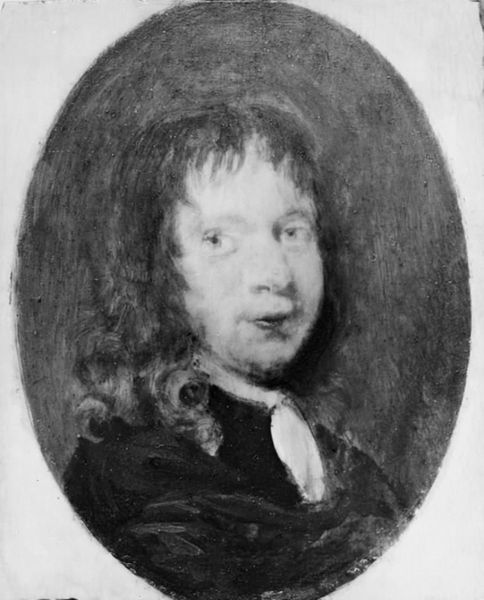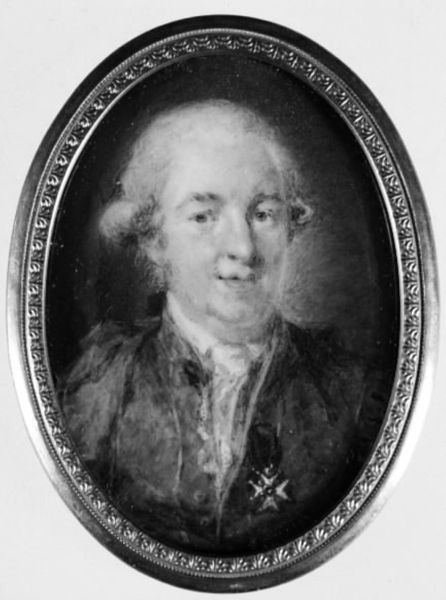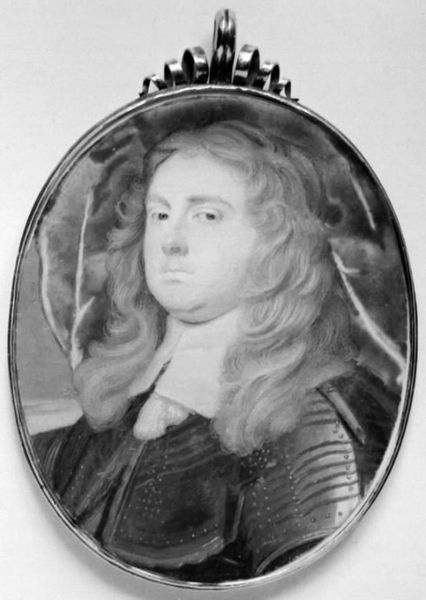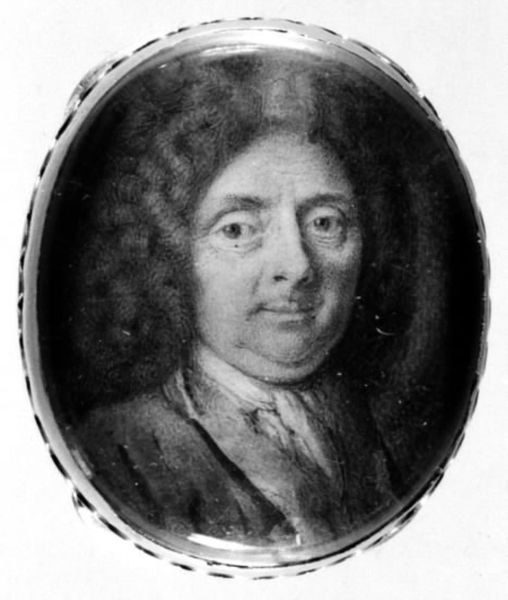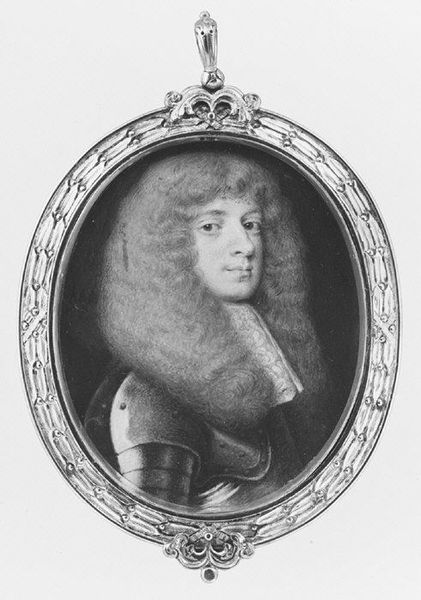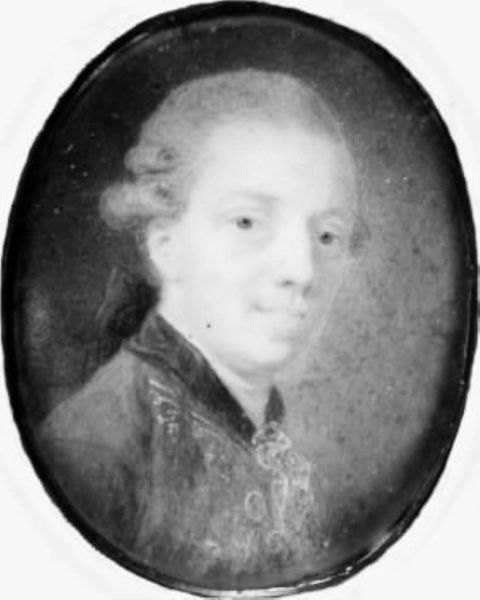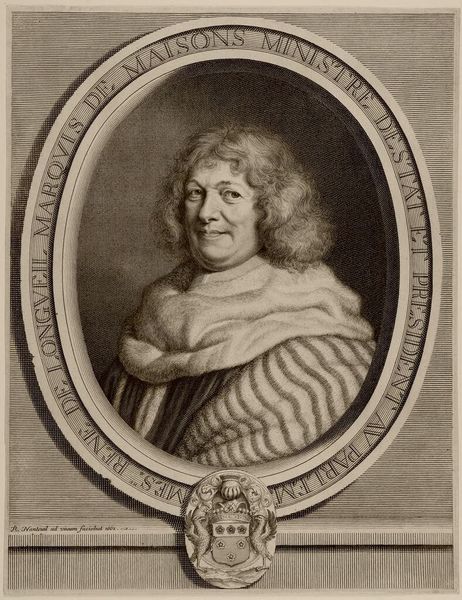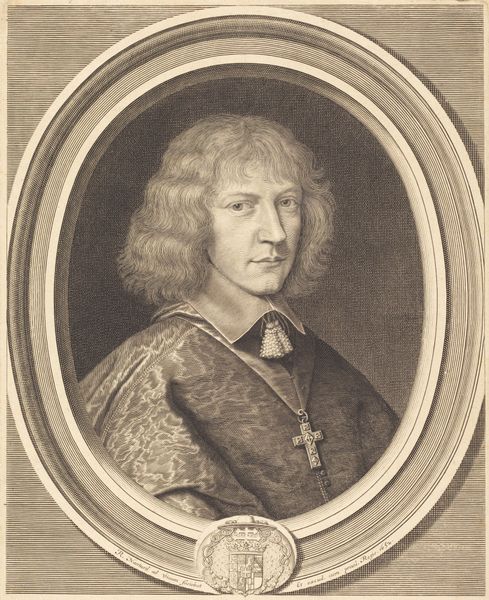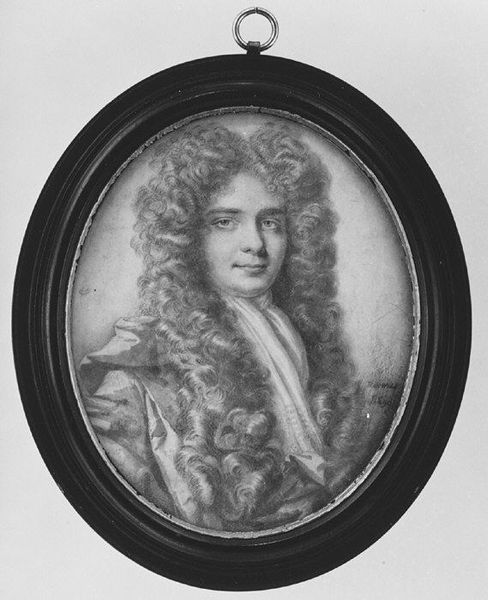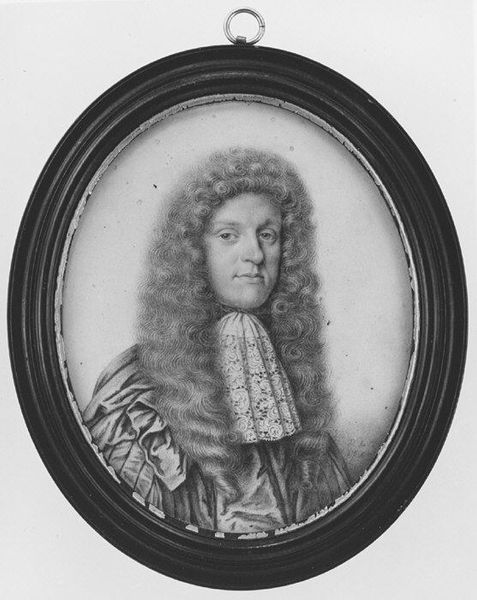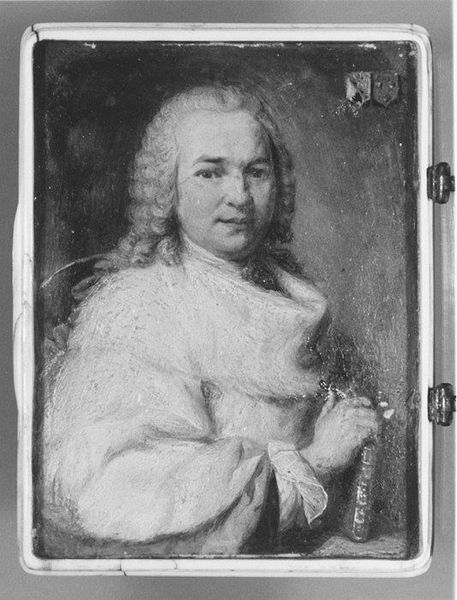
oil-paint
#
portrait
#
baroque
#
oil-paint
#
black and white
#
history-painting
#
monochrome
#
monochrome
Dimensions: 6 cm (height) x 5 cm (width) (Netto)
Editor: This is "Mandsportræt," or "Portrait of a Man," believed to have been created between 1615 and 1637. It's currently held at the SMK - Statens Museum for Kunst. The texture appears quite striking, possibly due to its age or the oil paint medium. I’m curious, what stands out to you when you look at this portrait? Curator: Well, considering the period, this portrait likely served more than just an aesthetic purpose. Portraits of this nature were deeply embedded in social and political structures. Note the sitter's attire – it suggests a certain level of status. Editor: It does appear ornate, especially considering the monochromatic palette. How might a portrait like this function within its historical context? Curator: Precisely. These portraits acted as visual signifiers of power, wealth, and lineage. Think about the institutions that supported art creation and patronage. Did the Church, the state, or private wealth predominantly influence its production? Knowing the social status or trade guilds, can we pinpoint his role and its public imagery during that specific moment in the 17th century? Editor: So, the politics of imagery, right? I mean, someone commissioned this portrait to project a certain image. The details matter. Curator: Absolutely. Each brushstroke and carefully chosen garment reflects the political landscape and prevailing ideology. Do you notice anything in the face of this gentleman? Editor: His eyes do have an unsettling expression. The man looks sad but his eyes look like the eyes of a child, in my view. The historical context, the baroque era, might not jump to my mind, perhaps it would if the portrait were colorful, and depicting an important historical moment or a baroque aristocratic person. It's not just about historical events; it's how power used art to construct identities. Thank you, I am grateful for that. Curator: And I you for sharing. Art gives the past voice, that can inform our own time, our own perspectives of today’s socio-political constructions, like museums!
Comments
No comments
Be the first to comment and join the conversation on the ultimate creative platform.
